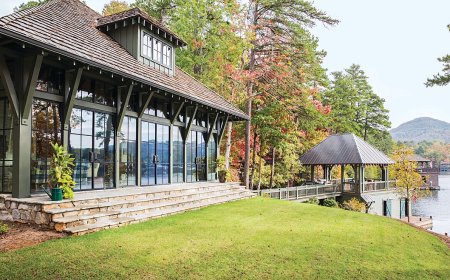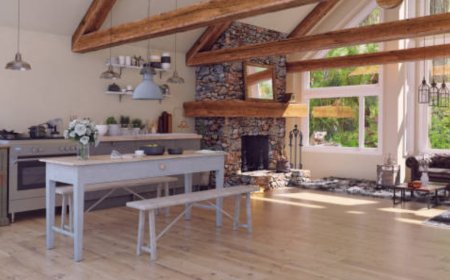How to Explore 3rd Arrondissement Temple
How to Explore 3rd Arrondissement Temple The 3rd Arrondissement of Paris, often overshadowed by the glitter of the Louvre or the romance of Montmartre, holds one of the city’s most authentic and historically rich neighborhoods: the Temple district. Centered around the ancient Rue du Temple and the remnants of the medieval Knights Templar stronghold, this area is a captivating blend of medieval her
How to Explore 3rd Arrondissement Temple
The 3rd Arrondissement of Paris, often overshadowed by the glitter of the Louvre or the romance of Montmartre, holds one of the city’s most authentic and historically rich neighborhoods: the Temple district. Centered around the ancient Rue du Temple and the remnants of the medieval Knights Templar stronghold, this area is a captivating blend of medieval heritage, bohemian charm, and contemporary Parisian life. Exploring the 3rd Arrondissement Temple is not merely a walk through streets—it’s a journey into the soul of Paris, where cobblestone alleys whisper stories of revolutions, artisan ateliers breathe creativity into every corner, and hidden courtyards offer quiet sanctuaries from the urban rush. Whether you’re a history buff, a food lover, a design enthusiast, or simply seeking the Paris that locals know, this district delivers an immersive, unfiltered experience. This guide provides a comprehensive, step-by-step roadmap to help you uncover the depth, beauty, and hidden gems of the 3rd Arrondissement Temple, transforming a casual visit into a meaningful exploration.
Step-by-Step Guide
Begin at Place des Vosges
Your exploration of the 3rd Arrondissement Temple begins at Place des Vosges, the oldest planned square in Paris and a masterpiece of Renaissance architecture. Constructed between 1605 and 1612 under King Henri IV, this symmetrical red-brick and stone square is framed by uniform arcaded buildings with steep slate roofs. Take a moment to admire the central fountain and the statue of Louis XIII, then stroll along the perimeter to observe the original wooden shutters and wrought-iron balconies. This is not just a picturesque landmark—it’s the historic gateway to the Temple district. Many of the buildings here once housed nobility and artists, including Victor Hugo, who lived at No. 6 and turned his residence into the now-famous Victor Hugo Museum. Entering the square from the south side leads directly toward Rue du Temple, the artery of the district.
Walk Down Rue du Temple
From Place des Vosges, head east along Rue du Temple, a bustling street that has evolved from a medieval fortress to a vibrant commercial corridor. The street’s name derives from the Temple Fortress, a massive 13th-century stronghold built by the Knights Templar. Though the fortress was demolished after the French Revolution, the street retains its historical gravity. As you walk, notice the mix of 18th-century facades, modern boutiques, and family-run cafés. This is where Parisian tradition meets contemporary flair. Stop at No. 137, where the former Temple Prison once stood—the site where Louis XVI and Marie Antoinette were briefly held before their execution. A small plaque on the wall marks the location, offering a sobering reminder of the district’s revolutionary past.
Discover the Musée des Arts et Métiers
Just a five-minute walk southeast of Rue du Temple, the Musée des Arts et Métiers awaits. Housed in the former priory of Saint-Martin-des-Champs, this museum is a treasure trove of scientific and industrial innovation. Founded in 1794, it holds over 80,000 objects, including original models of the first airplane by the Wright brothers, early automobiles, vintage sewing machines, and Foucault’s pendulum—the very device that proved the Earth’s rotation in 1851. The museum’s architecture alone is worth the visit: soaring Gothic vaults and stained-glass windows create an atmosphere of reverence for human ingenuity. Allow at least two hours to explore the permanent exhibits, and don’t miss the clock collection on the second floor, featuring intricate timepieces from the 16th to the 19th centuries. The museum is a quiet counterpoint to the busy streets, offering intellectual depth and awe-inspiring craftsmanship.
Explore the Marais’ Hidden Courtyards
One of the most rewarding aspects of exploring the 3rd Arrondissement Temple is discovering its hidden courtyards—secret sanctuaries tucked behind unassuming doors and alleyways. Wander off Rue du Temple into side streets like Rue des Rosiers, Rue des Archives, and Rue du Fauconnier. Look for iron gates marked with “Cours” or “Impasse.” Many of these courtyards date back to the 17th century and were originally designed as communal spaces for residents of grand townhouses. Today, they house artisan workshops, tiny galleries, and private gardens. One standout is Cour du Dragon on Rue des Rosiers, where a 16th-century dragon sculpture adorns the wall and a tiny café serves the best crêpes in the neighborhood. These courtyards offer a rare glimpse into the intimate, layered history of Parisian domestic life.
Visit the Musée Carnavalet
Just a short walk from Place des Vosges, the Musée Carnavalet is dedicated entirely to the history of Paris. Housed in two magnificent Renaissance mansions—the Hôtel Carnavalet and the Hôtel Le Peletier de Saint-Fargeau—this museum offers an unparalleled narrative of the city’s evolution from prehistoric times to the present. The Temple district features prominently in the exhibits, with original artifacts from the demolished fortress, revolutionary pamphlets, and personal items belonging to key figures of the era. The museum’s period rooms are particularly stunning: a recreated 18th-century salon, a revolutionary-era kitchen, and a 19th-century bourgeois bedroom transport you directly into the daily lives of Parisians. Admission is free, and the museum rarely feels crowded, making it an ideal spot for quiet reflection and deep historical immersion.
Stroll Through Rue des Rosiers
Rue des Rosiers is the heart of the historic Jewish quarter of Paris, known as the Pletzl. This narrow, lively street is lined with kosher bakeries, falafel shops, antique bookstores, and Jewish delis serving traditional dishes like brisket, matzo ball soup, and challah bread. The aroma of fresh bagels and spices fills the air, and the murmur of Yiddish and French blends into a unique cultural symphony. Visit the Musée d’Art et d’Histoire du Judaïsme, located just off the street, for a profound look at Jewish life in Europe over centuries. The museum’s collection includes ritual objects, manuscripts, and a moving exhibit on the Holocaust’s impact on French Jewry. In the afternoon, sit at a café terrace with a cup of coffee and watch the rhythm of daily life unfold: grandparents buying challah, artists sketching in corners, and children playing under the chestnut trees.
End at the République Fountain and the Canal Saint-Martin
As your exploration nears its end, head north toward the Place de la République, where the monumental fountain stands as a symbol of liberty, equality, and fraternity. The surrounding area is a popular gathering spot for locals, with street performers, skateboarders, and open-air markets. From here, take a leisurely 15-minute walk east along Rue du Faubourg du Temple to reach the Canal Saint-Martin. This waterway, once a vital commercial route, is now a beloved urban oasis. Sit on the grassy banks, watch boats glide through the locks, and enjoy a picnic with a baguette, cheese, and a bottle of wine. The bridges, especially the Pont de Sully, offer stunning views of the surrounding architecture. This tranquil ending ties together the district’s industrial past, revolutionary spirit, and modern-day serenity.
Best Practices
Plan Your Visit Around Opening Hours
Many of the 3rd Arrondissement’s most significant sites—museums, courtyards, and historic buildings—have specific opening days and hours. The Musée des Arts et Métiers and Musée Carnavalet are closed on Mondays, while smaller galleries and artisan shops may close for lunch between 1:00 p.m. and 3:00 p.m. Always verify hours online before heading out. Arriving early in the morning not only avoids crowds but also allows you to capture the district in its most peaceful state, when the morning light filters through the narrow alleys and the scent of fresh bread drifts from local boulangeries.
Wear Comfortable, Walkable Footwear
The 3rd Arrondissement is best experienced on foot. Cobblestones, uneven sidewalks, and steep staircases leading to courtyards are common. High heels or stiff shoes will make your exploration uncomfortable and potentially hazardous. Opt for sturdy, broken-in walking shoes with good grip. Many of the most rewarding discoveries—hidden doorways, stairwells to rooftop gardens, and secret passageways—are found off the main thoroughfares, and comfort is key to navigating them safely.
Engage with Locals, Not Just Tourist Signs
While guidebooks and digital maps are helpful, the true essence of the Temple district is revealed through human connection. Ask shopkeepers where they get their coffee, inquire with bakers about their family recipes, or strike up a conversation with an artist painting in a courtyard. Locals often know of unlisted galleries, pop-up markets, or seasonal events not found in brochures. A simple “Où est le meilleur pain dans le quartier?” (“Where is the best bread in the neighborhood?”) can lead to a personal recommendation that becomes the highlight of your visit.
Respect Private Spaces and Cultural Sensitivities
Many courtyards and buildings in the district are privately owned residences or working ateliers. Even if a gate appears open, do not enter without permission. Similarly, in the Jewish quarter, be mindful of religious observances—especially during Shabbat (Friday evening to Saturday evening), when many businesses close and loud music or photography near synagogues may be inappropriate. A respectful demeanor goes a long way in preserving the authenticity of the neighborhood and ensuring warm interactions.
Carry a Small Notebook or Use a Digital Journal
As you explore, you’ll encounter countless details that deserve documentation: the name of a hidden café, the story behind a sculpture, the scent of a particular spice blend. Keeping a journal—whether handwritten or digital—helps you retain the sensory and emotional layers of your experience. Later, this record becomes a personal archive of discovery, far richer than any photo album. Consider sketching architectural details or jotting down phrases in French you hear; these fragments become meaningful touchstones of your journey.
Visit During Off-Peak Seasons
While spring and early autumn offer pleasant weather, they also bring the highest tourist volumes. For a more intimate experience, consider visiting in late November, January, or early February. The district feels quieter, the light is softer, and locals are more available for conversation. Many museums offer discounted or free admission during these months, and you’ll have more space to absorb the art and history without jostling through crowds.
Support Local Businesses
The vitality of the 3rd Arrondissement Temple depends on its independent shops, family-run restaurants, and artisan workshops. Choose to dine at a family-owned bistro over a chain restaurant. Buy your cheese from a fromagerie, your books from a secondhand bookstore, and your souvenirs from a local artist. These choices sustain the district’s character and ensure that its cultural fabric remains intact for future generations. Look for signs that say “Produit Local” or “Artisan” to identify authentic, community-supported businesses.
Tools and Resources
Recommended Mobile Apps
Several apps enhance your exploration of the 3rd Arrondissement Temple. Paris Museum Pass offers free entry to over 50 sites, including the Musée des Arts et Métiers and Musée Carnavalet, and allows you to skip long lines. Google Maps Offline is essential for navigating narrow streets where cellular service may be unreliable—download the district in advance. For historical context, VoiceMap offers self-guided audio tours tailored to the Temple district, narrated by local historians. Yelp France and LaFourchette help you discover highly rated local eateries, while Paris Walks provides downloadable walking tour maps with annotated points of interest.
Essential Books and Guides
Deepen your understanding with these authoritative publications: Paris: The Secret History by Andrew Hussey offers compelling narratives about the district’s revolutionary past. The Marais: A Guide to the Historic Heart of Paris by Caroline de Maigret provides detailed architectural insights and personal anecdotes from residents. For food lovers, Paris Sweets: The Art of French Pastry by Dominique Ansel includes recipes and stories from the neighborhood’s best patisseries. The Lonely Planet Paris guidebook has an excellent walking tour section specifically for the 3rd Arrondissement, complete with maps and historical footnotes.
Online Archives and Digital Exhibits
The Bibliothèque Historique de la Ville de Paris offers free online access to digitized maps, photographs, and documents from the 19th century, including original blueprints of the Temple Fortress. The Musée Carnavalet’s website features virtual 3D tours of its most significant rooms, allowing you to preview exhibits before your visit. The OpenStreetMap project includes detailed layers of historic Paris, showing how streets have changed since the 1700s. For architectural enthusiasts, the Atlas of Historical City Plans by the University of Paris provides interactive overlays of the district’s evolution over centuries.
Local Cultural Institutions
Connect with organizations that preserve the district’s heritage. The Association pour la Sauvegarde du Marais organizes monthly guided walks led by historians and architects. The Centre de Documentation du Judaïsme offers lectures and workshops on Jewish culture and history in Paris. The Atelier des Arts du Marais hosts open studio days where visitors can meet local painters, ceramicists, and textile designers. These institutions provide access to insider knowledge and often host events not advertised to the general public.
Photography and Documentation Tools
For those documenting their journey, a compact mirrorless camera with a wide-angle lens captures the narrow streets and courtyards beautifully. Use a tripod for low-light shots in dimly lit passageways. Apps like Lightroom Mobile and Adobe Express allow you to edit and caption photos on the go. For audio documentation, a handheld recorder like the Zoom H1n captures ambient sounds—birdsong in courtyards, clinking glasses in cafés, the murmur of street conversations—that bring your memories to life.
Real Examples
Example 1: A Historian’s Day in the Temple
Dr. Élise Moreau, a Parisian historian specializing in medieval architecture, spends her Saturday mornings exploring the 3rd Arrondissement. She begins at Place des Vosges, where she photographs the original stone carvings on the arcades, comparing them to 17th-century engravings in her archive. She then walks to Rue du Temple, pausing at the plaque marking the Temple Prison site to read aloud from a letter written by a guard during the Revolution. At the Musée des Arts et Métiers, she spends an hour studying the design of a 1790s hydraulic press used in the nearby workshops. After lunch at a kosher bistro on Rue des Rosiers, she visits the Musée Carnavalet to examine a newly restored tapestry depicting the 1789 uprising near the Bastille. Her day ends at the Canal Saint-Martin, where she sketches the reflections of the bridges in the water. “This district,” she says, “isn’t just preserved history—it’s a living archive. Every stone has a story, and every corner holds a new question.”
Example 2: A Food Lover’s Culinary Journey
Marco, a chef from New York, visits Paris to study French pastry techniques. He starts at Boulangerie Pâtisserie Stohrer, founded in 1730 and the oldest pastry shop in Paris, where he tries the legendary baba au rhum. He then heads to L’As du Fallafel on Rue des Rosiers, where he samples the famous falafel sandwich with house-made harissa and pickled turnips. At a small atelier on Rue du Fauconnier, he meets a master chocolatier who teaches him how to temper dark chocolate using traditional copper bowls. He ends his day at a family-run wine bar near the canal, where he tastes a rare natural wine from the Loire Valley paired with aged goat cheese. “I came for the food,” he says, “but I left with a deeper understanding of how culture shapes taste.”
Example 3: A Photographer’s Hidden Finds
Sophie, a street photographer from Berlin, spends a week in the 3rd Arrondissement capturing candid moments. She discovers a tiny courtyard on Rue des Archives where an elderly woman tends to a rooftop garden of lavender and rosemary. She photographs a young boy playing with a wooden top in front of a 17th-century doorway, unaware of the camera. She returns to the same spot three days later and is invited inside for tea by the woman, who tells her the garden has been in her family since 1923. Sophie’s series, “Courtyards of the Temple,” is later exhibited at a local gallery and features captions in both French and German. “The most powerful images,” she says, “aren’t the ones you plan. They’re the ones the neighborhood gives you when you slow down and listen.”
Example 4: A Family’s Multi-Generational Visit
The Lefèvre family—grandparents, parents, and two teenagers—visit the 3rd Arrondissement as part of a heritage trip. The grandparents, who grew up in the Marais, point out the bakery where they bought their first croissant in 1958. The parents visit the Musée Carnavalet to show their children original letters from their great-grandmother, who lived in the district during the 1918 flu pandemic. The teenagers, initially uninterested, become fascinated by the interactive touchscreen displays at the Musée des Arts et Métiers and spend an hour experimenting with a replica of an early telegraph machine. They end the day eating crêpes at a family-owned stand near the canal, where the owner remembers their grandfather from decades ago. “It wasn’t just a tour,” says the mother. “It was a bridge between generations.”
FAQs
Is the 3rd Arrondissement Temple safe for solo travelers?
Yes, the 3rd Arrondissement is considered one of the safest areas in Paris for solo travelers. It is well-lit, frequently patrolled, and populated by residents and visitors throughout the day and evening. As with any urban area, remain aware of your surroundings, especially in isolated courtyards late at night. Avoid displaying valuables openly and keep your belongings secure.
Can I visit the Temple district with children?
Absolutely. The district is family-friendly, with wide sidewalks, open parks like Place des Vosges, and interactive museums like the Musée des Arts et Métiers that engage young minds. Many cafés offer high chairs and children’s menus, and the canals provide safe walking paths for strollers. The Musée Carnavalet has a dedicated children’s discovery zone with hands-on activities.
Are there guided tours available in English?
Yes, multiple guided walking tours of the 3rd Arrondissement Temple are offered in English. Companies like Paris Walks, Context Travel, and Fat Tire Tours provide small-group tours led by licensed historians and local experts. These tours typically last 2–3 hours and focus on history, architecture, or food. Booking in advance is recommended, especially during peak season.
What is the best time of year to visit?
April to June and September to October offer the most pleasant weather and manageable crowds. Spring brings blooming chestnut trees and outdoor café culture, while autumn offers golden light and fewer tourists. Winter is quiet and atmospheric, ideal for museum visits and cozy cafés. Avoid late July and August, when many locals leave Paris and some businesses close.
Do I need to speak French to explore the district?
No, English is widely spoken in museums, shops, and restaurants catering to tourists. However, learning a few basic French phrases—such as “Bonjour,” “Merci,” and “Où est…?”—is greatly appreciated and often leads to warmer interactions. Locals are more likely to offer extra recommendations if you make an effort to communicate in their language.
How much time should I allocate for exploring the 3rd Arrondissement Temple?
For a thorough exploration, allocate at least one full day. If you’re short on time, prioritize Place des Vosges, Rue du Temple, Musée Carnavalet, and Rue des Rosiers. A half-day visit can cover the highlights, but to truly absorb the atmosphere and uncover hidden gems, plan for a full day or spread your visit over two mornings.
Are there free attractions in the area?
Yes. Place des Vosges, the canal banks, and many of the courtyards are freely accessible. The Musée Carnavalet offers free admission year-round. The exterior of the Musée des Arts et Métiers and the streetscape of Rue du Temple are also free to explore. Many street markets and pop-up art displays occur without charge, especially on weekends.
Can I bring a pet?
Most outdoor areas, including Place des Vosges and the Canal Saint-Martin, welcome well-behaved pets on leashes. Many cafés have outdoor seating where dogs are permitted. However, pets are not allowed inside museums or most indoor shops. Always carry waste bags and respect signage indicating pet restrictions.
Conclusion
Exploring the 3rd Arrondissement Temple is not a checklist of landmarks—it’s a sensory immersion into the layered history, culture, and soul of Paris. From the grandeur of Place des Vosges to the intimate whispers of hidden courtyards, from the revolutionary echoes of Rue du Temple to the aromatic warmth of Rue des Rosiers, every step reveals a new dimension of the city. This district does not shout its significance; it invites you to listen, to wander, to linger. By following this guide—planning thoughtfully, respecting the space, engaging with locals, and using the right tools—you transform from a visitor into a participant in its enduring story. The Temple district endures not because of its monuments, but because of its people, its traditions, and its quiet resilience. To explore it is to understand Paris not as a postcard, but as a living, breathing organism shaped by centuries of creativity, conflict, and community. Let this journey be more than sightseeing. Let it be a connection.





































